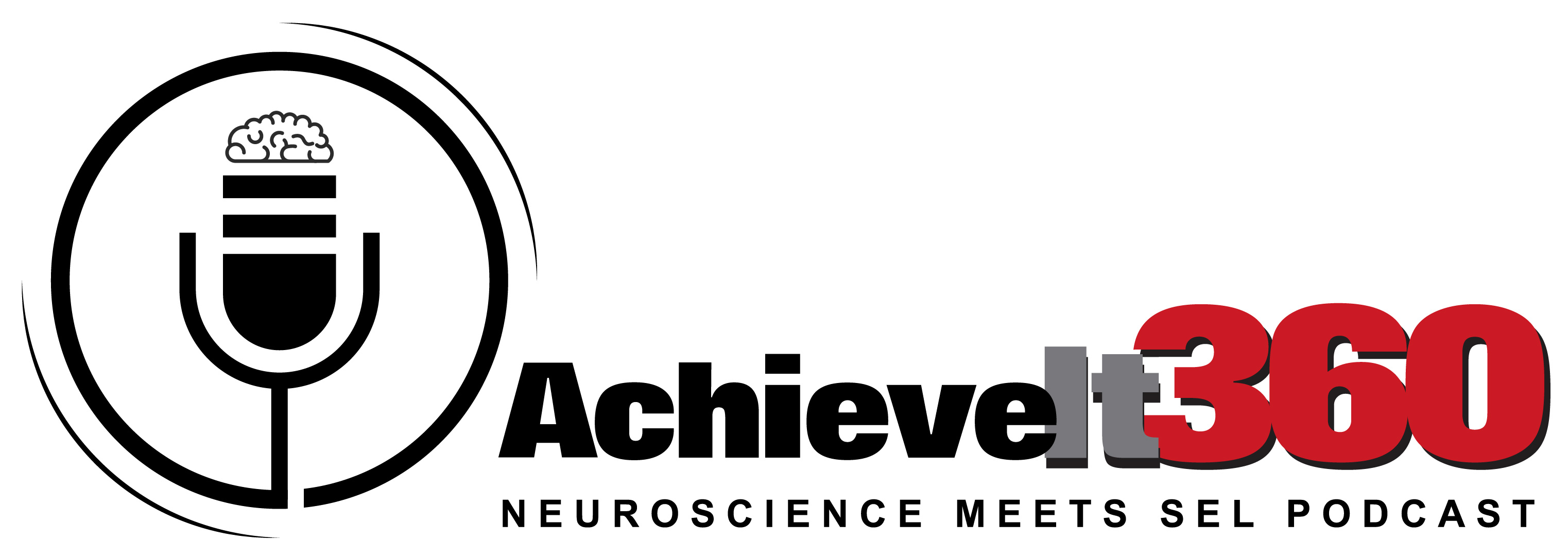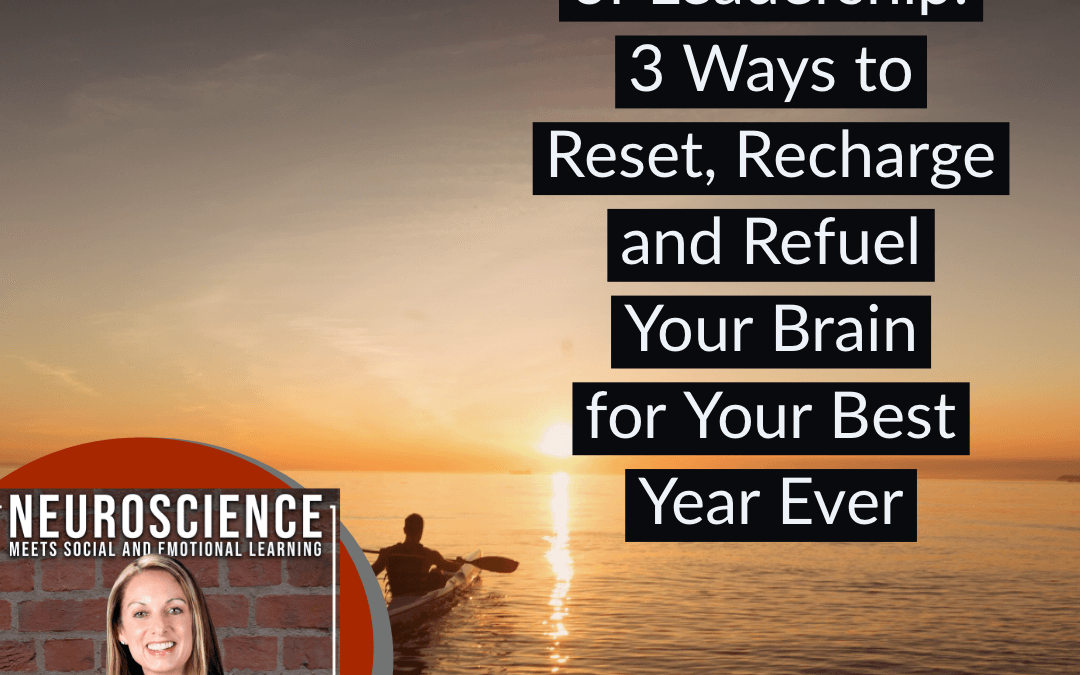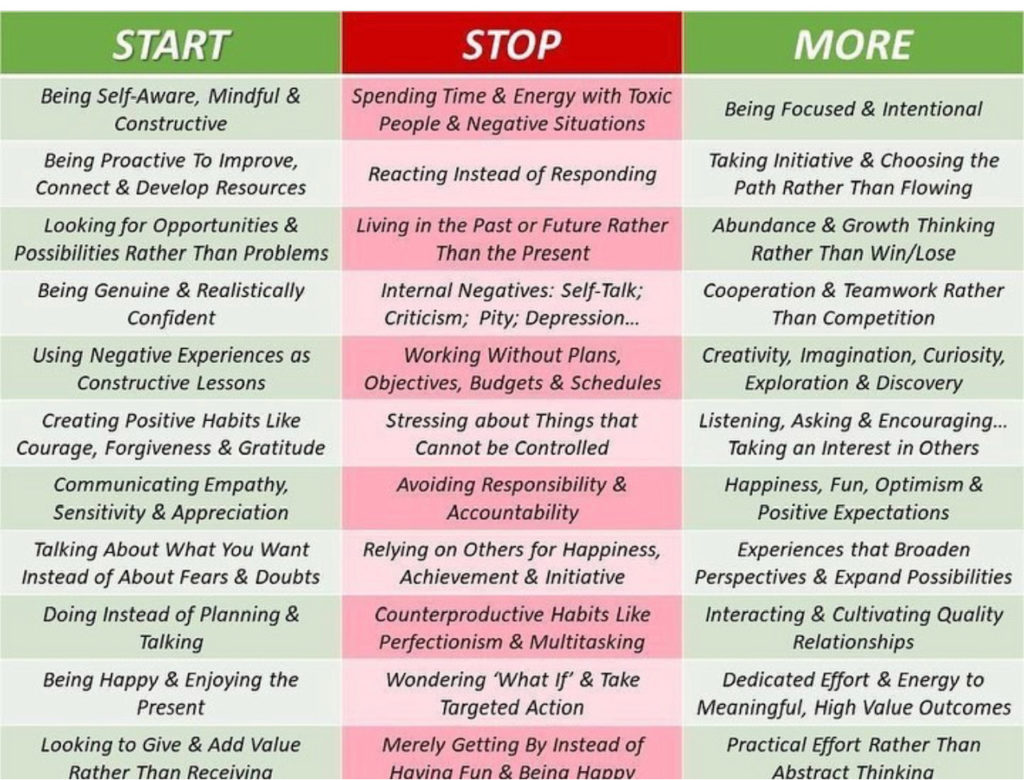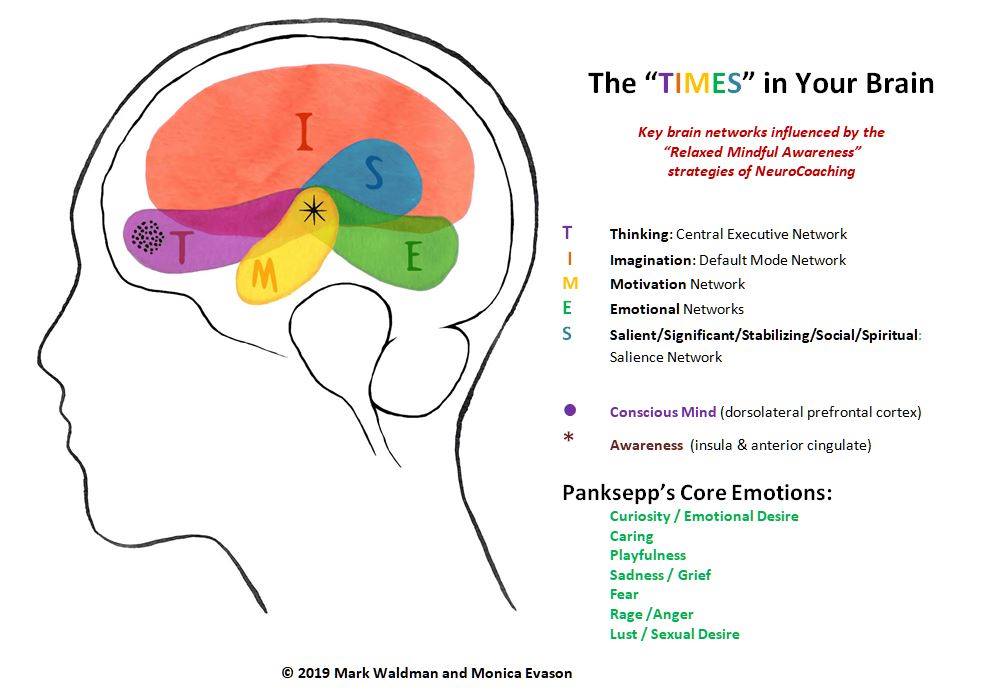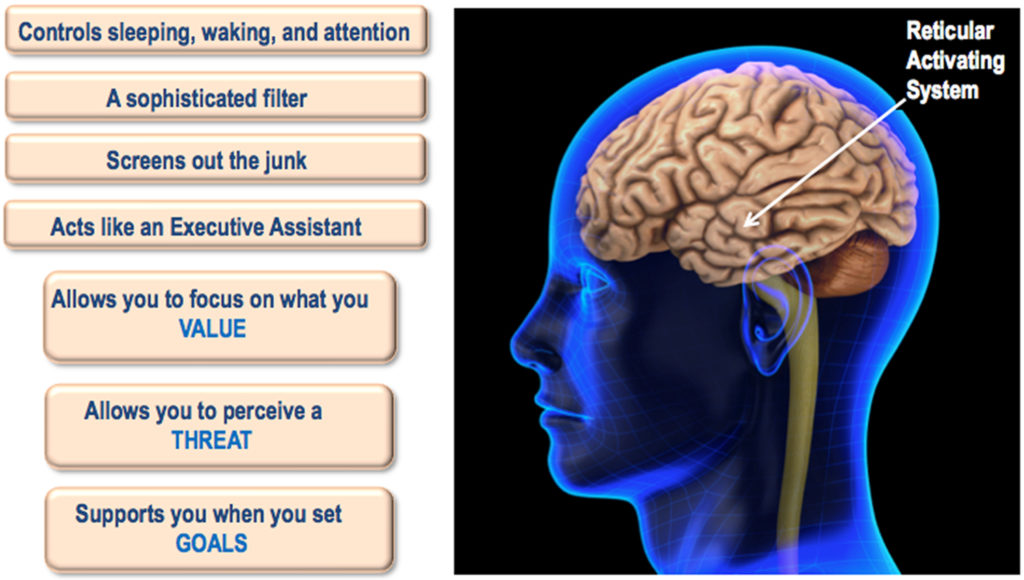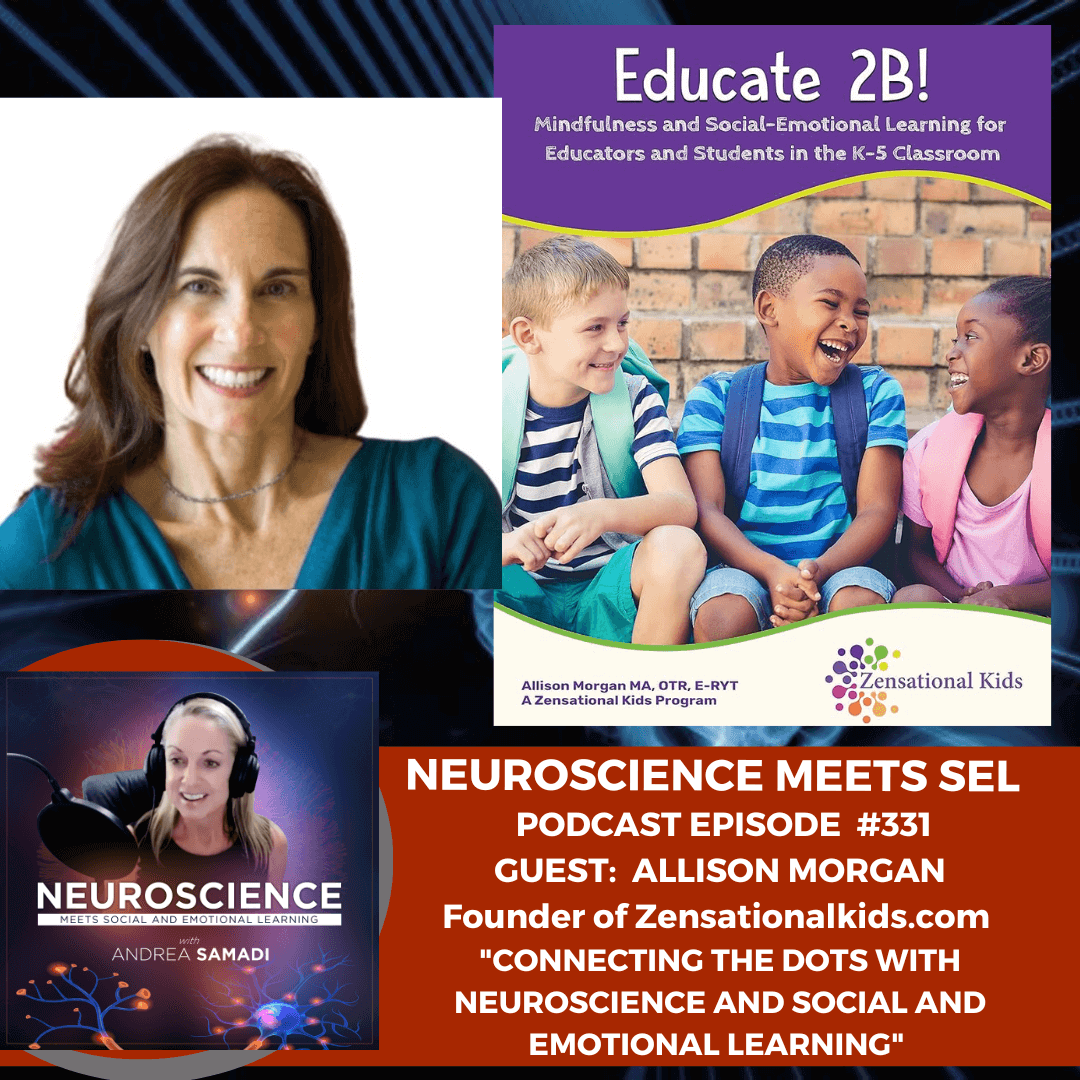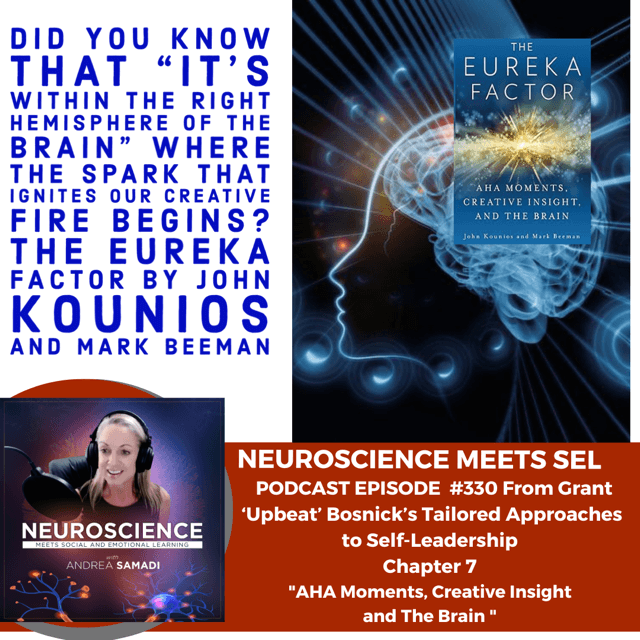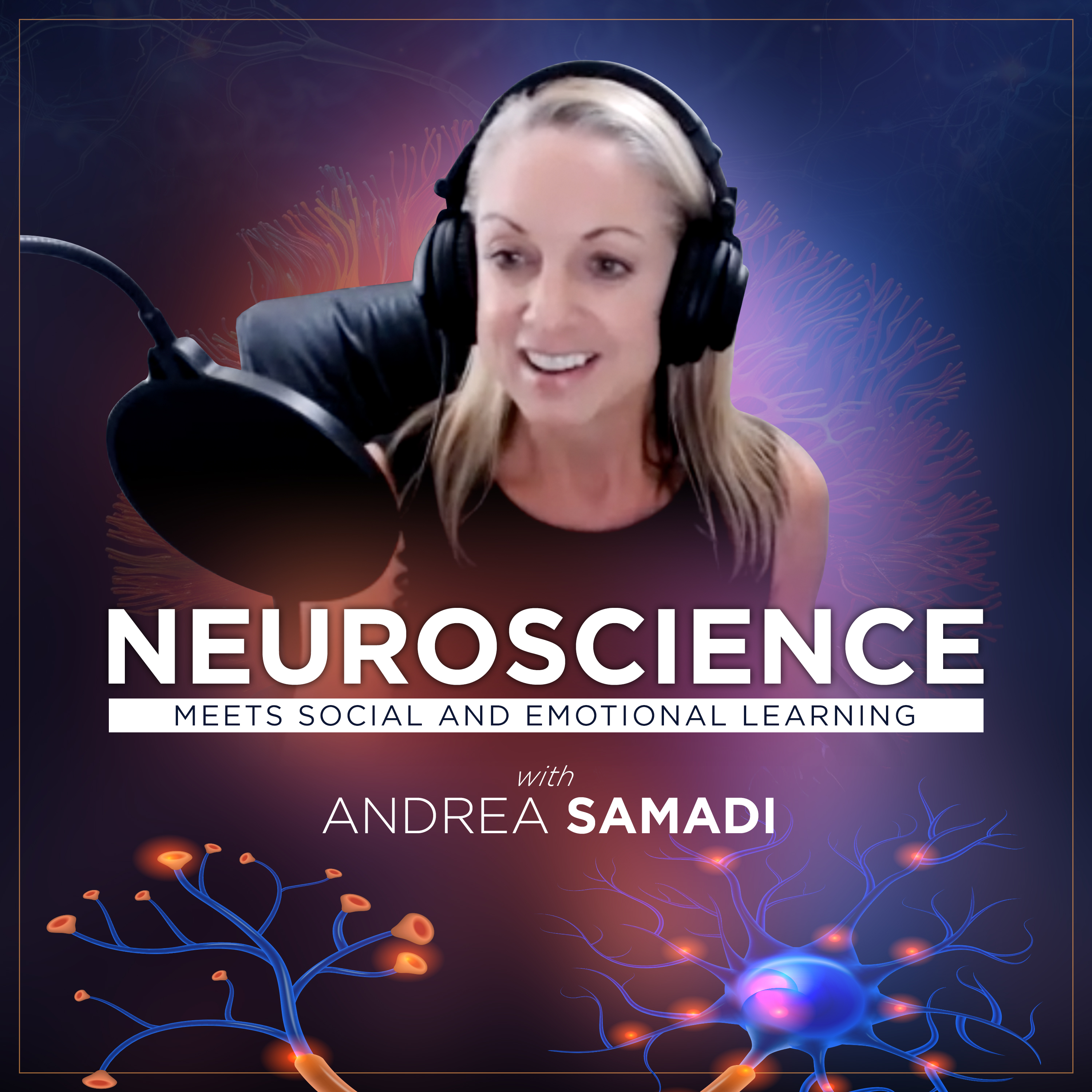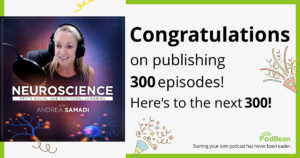Welcome back to the Neuroscience Meets Social and Emotional Learning podcast, episode #103, where we will cover “The Neuroscience of Leadership: How to Reset, Recharge and Refuel Your Brain for Your Best Year Ever.” As we are now well into the New Year of 2021, with 2020 behind us as a distant but not forgotten memory, have you taken the time to close out the old year and welcome in the new? Whatever planning activity you do, I’ve added some ideas to this episode that I’ve collected over the years of working directly with the top leaders in motivation and success that really do add new energy to fuel this new year, with practical neuroscience tied to each strategy. The idea is to look at your year with your brain in mind and see if this new lens can create the best year ever for you.
We all intuitively know that there’s a mental energy boost that comes along with “being ahead” of the game, and for those who work in our classrooms, you know that this year, getting ahead with our students looks much different than prior years, with perhaps a phone call before the start of the year to welcome your new students, break the ice, or tie something personal into your lessons that helps you to quickly connect on a deeper level, setting the tone for your year.
Getting ahead also translates into the workplace, with significant advantages in sales, for instance, knowing and planning where your sales will come from and having a solid pipeline, sets the tone for the rest of the year, much like the sports team who gets that first point early in the game, there’s a competitive advantage to this that builds momentum. Many people will be starting new jobs or careers with the mergers and resets that occurred from 2020, and the strategies that I am going to share with you, will be relevant to those of us who are starting something new, looking to refuel for a new year, recharge our batteries in 2021, shift, pivot and building momentum early, to set the rhythm for your best year ever.
For those who work as entrepreneurs, this is the way we launch every year. For me, it’s been since I left the corporate space in 2012, so this will be my ninth New Year implementing these strategies. The first year, on Day One of working on my own, I remember calling my good friend Patti Knoles, who had been in business for herself for many years, and saying “Patti, I’m so scared! What if what I am planning to do doesn’t work out?” I don’t remember exactly what she said, but I do remember where I was at the time, and that whatever she said made me feel better. I think she said something like “how will you know if you don’t try?” and she was right—that’s the same words of wisdom that I give to those people, including one of my former sales managers, who called me after they have made this leap recently, for any thoughts, ideas or suggestions on how to be successful working from home, for yourself.
Whether in business for ourselves, or working for someone else, it takes a certain mental mindset to be 100% in charge of our results—our day, income, and life, and I know that it can also be quite scary, so for those of you facing 2021 with this new lens, here are some strategies that you can implement that will put you ahead of the game mentally, which I’m confident will change your results and set you up, for your best year ever.
Idea #1: Create Early Wins to Increase Motivation, Creativity and Overcome Challenges.
Michael D. Watkins, the cofounder of Genesis Advisers, a leadership development company, and the author of The First 90 Days: Critical Success Strategies for New Leaders at All Levels[i] shares that “the single most important principle to making a successful transition in times of change, is to get early wins to build momentum fast.”[ii]
We talked about this in the introduction, how achieving early wins creates a new rhythm and momentum that changes your mindset to help you to focus on the success you are destined for, with greater outcomes, but how exactly do we win early? Winning doesn’t usually just happen. It’s never by chance or luck. Here are some strategies you can use to develop a winner’s brain within yourself, or your organization, or team, so that you can have those predictable results that come with winning early.
How To Put This Tip into Action With the Brain in Mind?
Uncover What Motivates You, Get into Flow State and Create Your Winning Brain. There is a fine line between setting and achieving goals, and research shows that motivation is what is behind those who are successful at achieving the goals they have set. How do we uncover what motivates us? By now, most of us have heard of Simon Sinek’s[iii] work and the importance of starting with our “why” to inspire others to take action. If you haven’t watched this TED Talk[iv] in a while, it’s a good one to revisit. I read a more recent example of uncovering your own motivation with the newly appointed head coach of the New York Jets, (NFL) Robert Saleh, who is taking over the team “coming off one of the worst seasons in franchise history.”[v] Saleh explains his powerful story that launched his coaching career when he traded his “cubicle for his coaching dream after his brother’s 9/11 close call.”[vi] In an article I have included in the show notes, Saleh shares that he might not have been a football coach at all—if it weren’t for what his brother experienced on Sept. 11th, 2001. This is a true story that explains the motivation that skyrocketed Saleh’s coaching career, and I am certain will be the foundation for the success he will experience as a head coach, in addition to the emotional intelligence that he has developed that former Jaguars star Paul Posluszny (Poslozny) describes when he explains that Saleh’s “presence commands attention because of his knowledge, the way he communicates, and the trust players have in him.”[vii]
Connect Your Brain to this Strategy
So, how does this translate into developing your winning brain? Although focusing on the tasks you must complete to achieve your goals may seem boring, “neuroscience research suggests that commitment to mastering a craft can feel rewarding…that kind of immersion can help a person to achieve a state of heightened concentration described as flow.”[viii]
A study by researchers at the National Institutes of Health, involved professional jazz musicians. Using (fMRI) scans the researchers found that when the musicians practiced their craft, they displayed interesting patterns of brain activity.
“During creative improvisations, (or practice) the medial prefrontal cortex, an area of the brain involved in the integration of information to support complex goals and aspirations, became more active.” At the same time, “the dorsolateral prefrontal cortex, which is often involved in inhibiting behavior and monitoring thinking, became less active. (This is also the part of the brain where we feel overwhelmed). Limbic areas associated with anxiety also quieted. This study may provide a glimpse of the brain “in flow,” as the musicians used skills they’d already mastered — playing notes — in new and creative ways.”[ix]
The key to achieving these heightened levels of creativity, is to keep working, practicing, and learning, and your brain will further assist you to achieve your goals in flow state, in new and creative ways.
Problems and challenges will come up, they always do, for example, just imagine that you had this momentum built, started 2021 with your best foot forward, started winning early, and BAM—there’s a Covid-19 outbreak and you need to self-quarantine for the next 10 days, halting everything you’ve built for this year to a fast and sudden stop. This is the reality of the times we live in today, and more than ever it’s crucial to remember that goal achieving is a mental activity, starting at the brain level, and it’s important to take the time to remember your motivation. Instead of getting side-tracked by these problems, think of the bigger picture and “why” are you doing what you do. Take this time to think and reflect and you will be able to overcome any challenge, increase the thinking center of the brain, decrease where overwhelm and anxiety occur, and you will be well on your way to developing your winning brain.
Idea #2: Using Brain Network Theory to Increase Self-Awareness, Empathy, Creativity and Energy
Self-awareness was put on the map by Daniel Goleman[x] in 1995 with his book Emotional Intelligence: Why it Can Matter More Than IQ[xi] We all know of the importance of being aware of our emotions and human behavior, we covered it in episode #22 with Marc Brackett[xii] and his book, Permission to Feel[xiii], but do you have strategies in place for this? We did cover this topic in depth on Season 1 of the podcast “Self-Awareness: Know Thyself.”[xiv] Go back and listen to this episode—it was actually in our Top 5 most listened to episodes.
Next, take a look at the Start, Stop and Continue Graphic I’ve included in the show notes (if you are reading or listening to this episode on iTunes, go over to the Podbean app, where you can see the images) and start to think about the habits will you start, to bring you more energy, (like how will you become more self-aware and mindful by being in the present moment this year) what will your stop, (like living in the past or becoming reactive to the negativity that surrounds us on a daily basis) and what’s working for you, that you will continue (where will you be more focused and intentional)?
How to Put This Tip into Action with the Brain in Mind?
Start with the graphic and honing your self-awareness skills. Do more of what gives you energy, and less of what is draining. You’ll notice some things that are becoming obsolete in your life. What new strategies and knowledge can you gain? This is a powerful activity to think about, even its just long enough to think about one area you’ll focus on in each column this year.
When you begin to improve self-awareness, you can tune into others on a deeper level. Empathy stems from awareness. You can “either be aware and have empathy, or you can act out habitual behaviors, but you can’t do both at the same time.”[xv] Awareness involves the insula and the anterior cingulate in the brain, that work together.
Look at the graphic in the show notes created by my mentor, Mark Waldman, he explains how the key brain networks operate. Just as a reminder, when we look at any new research on the brain these days, we will notice that we no longer see studies that talk about the individual parts of the brain—like the thalamus, or the hippocampus, or even just the anterior cingulate cortex (ACC) (the part of the brain that lights up when we meditate) we will now see images that describe brain networks, nodes and connectivity. This means that at any given time, we might be daydreaming about something, and an entire network in our brain will light up. I’ve included an explanation of the TOP 3 brain networks in the show notes, because I think it’s fascinating. There are hundreds of these networks in our brain, and most of them are non-conscious, meaning that we are not aware of them, and how they can work for us, or against us. This is what motivates me personally—to keep learning more, and sharing this understanding with you for improved results.
We have the Default Mode Network, (imagination processes like daydreaming, creative problem solving, and mind wandering. This area is significantly larger than the other networks possibly because it develops so early in life and plays such an important role in child and brain development).
Next we have the Central Executive Network (which holds our conscious decision-making processes like thinking, planning, concentration, taking action in an organized way and focused attention). This area is in our prefrontal cortex and is also known as our Executive Functions—all of our task-oriented thoughts. If we are NOT performing a task, and do NOT have focused attention, this area turns off, and we can go into the Imagination Network into daydreaming, worrying or creating, depending on what we are allowing into our thoughts. When this network is turned on, when we are working and using our focused attention, and the Imagination Network is turned off. We can only be in one network at a time. That’s why it is so important to take breaks to prevent burnout, and to allow for creative thoughts to flow into your mind when working on difficult tasks.
Finally, there’s the Salience Network that doesn’t fully develop until we are around 28-30 years old, (which holds our awareness, intuition and compassion processes that integrate and stabilize the other two networks helping us to develop social awareness, empathy and our values). This network puts the importance of what we are thinking, weighs what is important, and helps to balance the other networks.
You can review this further with episode 48 on Brain Network Theory[xvi] for a more detailed overview, but for this episode, I just want you to look at the image and notice that these networks are all connected by our Awareness (the black star in the middle (underneath the I or the imagination/default mode network)—and know that if this area that includes the anterior cingulate and insula in the brain, is not stimulated, we cannot be empathetic or kind).
“The insula and the anterior cingulate are the parts of the brain that together allow you to switch between habitual behaviors (that won’t help you to attain new results) and self-awareness that will. (It’s self-awareness that increases our empathy). Those who spend more time noticing and being aware have a larger insula and anterior cingulate when their brains are viewed through fMRI scans.”[xvii]
The key to improving your own emotional intelligence here, is to continually work on being more self-aware and in turn, you will become more empathetic, kindness will increase and your results will soar. Just like what I mentioned with Robert Saleh, his presence commands attention, and I know that this is something he has developed over the years, by increasing his own self-awareness.
Idea #3: Your 9 Environments[xviii]: How to Create Energy Naturally from Your World Around You
This idea takes some self-reflection and thought, but I do highly recommend taking a 360 look at your life every year to evaluate where energy might be leaking that could be directed somewhere else. Your environments (that surround you) either inspire you or expire you. They either add energy and move you ahead or drain your energy and hold you back. The key here it to design your environments from the inside out, to support a happier and healthier version of you. You can stop relying on force and willpower, when your environments are lined up as everything is so much easier. We can change our inner environment and mindset with the Start, Stop Continue Chart that helps to improve our self-awareness and empathy, but also as equally important is to change our outer environment.
As we go into a new year, we might have some ideas with of that we want to improve our physical health, since health goals are usually the ones we see people starting the new year with, but it all begins with our mental mindset. After the year we had last year, we know of the importance of mental health and well-being, and that we must take control of our mental and emotional state, before we can even consider doing anything else. If we focus even for a moment on what’s fearful, or uncertain, we just won’t feel right, won’t be working at our best, and this takes training, because our brain has evolved to focus on what’s wrong, to keep us safe. So how do we focus intentionally on what we want in all areas of our life, without letting our automatic negative thoughts kill our goals before we have even started, or the negativity of the world bring us down?
For the past 5 years, I’ve attend a training call with Jim Bunch to run through my 9 environments, then I pick a few of them that I’ll focus on for the upcoming year. Since doing this activity, I’ve noticed that each year, planning becomes easier as environments have been “cleaned up” let’s say, with the work from prior years. Each year builds a stronger, more confident version of you and it helps my brain to put a focus on the environments that I want to focus on for that year. I don’t choose all 9, just 4 areas that receive most of my attention, and the others are in maintenance mode, as I look at them, and clean them up every year.
Look at the graphic and I will outline some tips for you to think about.
Body: how was your health this year? Did you try anything new? Some people want to lose weight, others gain weight. What things have you done for your nutrition? Have you done anything new for exercise? Have you tried adding supplements? Green shakes? What about your health team? Do you have a new chiropractor, physical therapist, doctor, dentist, trainer at the gym? Have you looked into any online health courses? Have you done any health challenges?
Memetic: your beliefs, your inner game, your ideas, how you perceive yourself in the world, your paradigms. A positive structure here sets us up for a successful life vs negative (or not good enough) belief structure that will prevent us from reaching our greatest heights. Have you let go of any negative information? Have you added anything to help you be more positive, productive and focused?
Self: We’ve talked about this area a lot, and it’s very important. It’s your identity, or what you do to improve yourself. Think about your wins, strengths, skills, and talents? Spend more time doing the things you love and outsource the things you don’t love to gain more energy in this area.
Nature: This environment includes the outdoors, four seasons, everything that’s living. Did you spend more time in nature this year? (Mountains, the beach, the park)? Did you take any trips that took you into nature?
Spiritual: (not the same as religion) connection to something greater than you, connection to a greater purpose. Do you practice yoga, meditation, prayer? Did you expand your spiritual community? Have you visited any locations that connected you more in this area?
Relationships: family, friends, close colleagues are you communicating better? Are you building more authentic relationships? Even with social distancing, what effort have you put in here to focus on others?
Network: your extended relationships (clubs, groups, social networks, wherever you connect w people) have you met any new people? When the pandemic hit, I wondered how I was going to build this area, last year, but was surprised to see just how many people were more available to speak virtually, than in any other year. I was able to interview people that I know would usually be traveling, and difficult to reach, giving me an incredible opportunity that helped this area as well as the relationship area.
Financial: wins in cash flow creation new job for active income? Develop any passive or residual income? Any new strategies for managing cash? You you tried using tools like Mint. com and have you looked at cutting your expenses? Do you have a clear picture of what comes in each month vs what you spend? What about wins at work, or your own business?
Physical: (home, office, cars) Have you organized your desk, workspace, closets, drawers, have you decluttered? Upgraded computer, cleaned up your memory?
With time, you can make your environments work for you, where they give you energy, rather than drain you. Think about the 4 you will focus on and make these 4 your priority.
How to Put This Tip into Action with the Brain in Mind?
Learn to understand and use your Reticular Activating System[xix] which is a filter in your brain that helps you to focus on the things that are important to you. If you have heard the idea that “energy flows where your attention goes” this explains why putting some focus on what you want to create in your 9 environments is so important, especially as you launch a new year. Be very careful of where you are putting your focus, because your RAS will help you to achieve whatever you are focused on, good or bad. There really is a power of making your environments work for you, not against you.
There’s so much more I could say about tips to reset and refuel your brain to create your best year ever, but these would be my top 3 tips of where to begin.
To Review:
Idea #1: How to Win Early and Overcome Challenges
Don’t forget to identify what motivates you, like how the near death of Robert Saleh’s brother during 9-11 inspired him to quit his cubicle job, leading him to being the newly appointed head coach of the NY Jets. What’s new and different will stimulate your motivation and reward networks, helping to drive you towards your goals at the brain level, while at the same time, will help you to bypass challenges that will inevitably come your way. With continued practice, you will reach those heightened levels of creativity that was seen with the jazz musicians who reached levels of flow that inspired them to play in new and creative ways.
Idea #2: How to Win by Increasing Self-Awareness, Empathy and Creativity
Improve your own self-awareness and this in turn will help you to be more empathetic and demonstrate kindness toward others. Our awareness expands with our experiences but develops later in life since it’s connected to the Salience Network, that fully develops around age 28-30. Put as much focus as you can on developing and improving your own self-awareness and your results will soar, as you hone this important emotional intelligence skill.
Idea #3: Designing Your Winning Environments: How to Create Energy and Stay Focused on Your Goals
With an understanding of the RAS, we can direct our laser and focused attention to what is important to us. Use the 9 environments activity as a guide to focus on 4 areas that you will focus on in 2021, and watch your life improve with this directed attention.
Reminder: The reticular activating system (RAS) is the area of the brain responsible for regulating arousal and sleep-wake transitions and is considered as one of the most important systems which facilitates the functioning of sensation and attention.
It functions as a filter of unnecessary noise so the important stuff can get through.
Your RAS takes what you focus on and then creates a filter for it. It then sifts through the data and presents only the pieces that are important to you. All of this happens without you noticing. The RAS programs itself to work in your favor without you actively doing anything at all. So if we set our intent and refocus, our RAS will help us out by filtering through billions of pieces of data that surround us every day, so we can see, hear and become exactly what we want to be, purely by what we put our attention towards.
I would love to know what insights you learned from these 3 brain-aligned strategies that I designed to reset, recharge and refuel your brain to create your best year yet. Send me a message on social media and share anything you’ve learned with me.
Stay tuned for EPISODE #104 being recorded this week, on “Brains that Dream: Exploring The Science and Mystery of Sleep.”
REFERENCES:
[i] Michael D. Watkins The First 90 Days: Proven for Getting Up to Speed Smarter and Faster (April 2013) https://www.amazon.com/dp/B00B6U63ZE/ref=dp-kindle-redirect?_encoding=UTF8&btkr=1
[ii] New Leader? Get Early Wins by Michael D. Watkins (Jan. 2009) https://hbr.org/2009/01/new-leader-get-early-wins
[iii] Simon Sinek Start With Why: How Great Leaders Inspire Everyone to Take Action https://simonsinek.com/product/start-with-why/
[iv] Simon Sinek TED Talk Published Sept. 2009 “How Great Leaders Inspire Action” https://www.ted.com/talks/simon_sinek_how_great_leaders_inspire_action?language=en
[v] Robert Saleh becomes Jets new head coach January 14, 2021 by Brian Costello https://nypost.com/2021/01/14/robert-saleh-becomes-jets-new-head-coach/
[vi] Robert Saleh traded cubicle for coaching dream after brother’s 9/11 close call by Ryan Dunleavy Jan. 12, 2021 https://nypost.com/2021/01/15/robert-saleh-wouldnt-be-jets-coach-without-brothers-9-11-close-call/?utm_campaign=iphone_nyp&utm_source=mail_app
[vii] ibid
[viii] Cultivating a Winner’s Brain (May 2010) https://www.health.harvard.edu/newsletter_article/cultivating-a-winners-brain
[ix] ibid
[x] https://www.danielgoleman.info/
[xi] Daniel Goleman: Emotional Intelligence: Why it Can Matter More Than IQ (January 2012) https://www.amazon.com/kindle-dbs/thankYouPage?_encoding=UTF8&a=DT%3AKCL&action=&asin=B000JMKVCG&noDevicePurchaseAllowed=&subtype=FREE_CHAPTER&targetFiona=DT%3AKCL
[xii] Neuroscience Meets Social and Emotional Learning Podcast EPISODE#22 with Marc Brackett on his book Permission to Feel: Unlocking the Power of Emotions https://www.achieveit360.com/founding-director-of-the-yale-center-for-emotional-intelligence-on-his-new-book-permission-to-feel/
[xiii] Marc Brackett Interview with Andrea Samadi on his book “Permission to Feel” (Published on YouTube Sept. 2019) https://www.youtube.com/watch?v=CeOzi8ZrFO4&feature=youtu.be
[xiv] Neuroscience Meets Social and Emotional Learning Podcast EPISODE #2 “Self-Awareness: Know Thyself” https://andreasamadi.podbean.com/e/self-awareness-know-thyself/
[xv] Where Does Self-Awareness Come From? (January 2017) by Nicole Gravagna, Ph.D https://www.forbes.com/sites/quora/2017/01/31/where-does-self-awareness-come-from/?sh=6080d3bd32b5
[xvi] Neuroscience Meets Social and Emotional Learning Podcast EPISODE #40 “Brain Network Theory: Using Neuroscience to Stay Productive During Times of Change and Chaos” https://www.achieveit360.com/brain-network-theory-using-neuroscience-to-stay-productive-during-times-of-change-and-chaos/
[xvii] Where Does Self-Awareness Come From? (January 2017) by Nicole Gravagna, Ph.D https://www.forbes.com/sites/quora/2017/01/31/where-does-self-awareness-come-from/?sh=6080d3bd32b5
[xviii] The 9 Environments of You by Jim Bunch https://unmistakablecreative.com/podcast/the-9-environments-that-make-up-your-life-with-jim-bunch/
[xix] What is the Reticular Activating System May 2013 https://www.youtube.com/watch?v=QCnfAzAIhVw
Podcast: Play in new window | Download
Subscribe: Apple Podcasts | RSS
